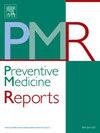吸烟导致的全球肾癌负担:1990-2021年全球疾病负担研究的系统分析
IF 2.4
3区 医学
Q2 PUBLIC, ENVIRONMENTAL & OCCUPATIONAL HEALTH
引用次数: 0
摘要
目的评价1990 - 2021年吸烟导致肾癌(KC)的流行病学负担和时间趋势。方法本研究纳入了2021年全球疾病负担(GBD)数据库中提供的204个国家和地区。研究对象为吸烟引起的KC患者。估计死亡、残疾调整生命年(DALYs)、残疾生活年(YLDs)和生命损失年(YLLs)。结果2021年,全球吸烟导致的KC死亡人数为16,216.48人(95% UI:9662.84 ~ 23,217.42),其中DALYs为382927.14人(95% UI:233634.99 ~ 536,755.44), YLDs为16,084.01人(95% UI:9290.43 ~ 25,354.68), YLLs为366,843.12人(95% UI:223833.69 ~ 513,164.93)。从1990年到2021年,全球疾病指标的年龄标准化率(ASR)下降,中等社会人口指数(SDI)国家的所有指标的年龄标准化率增长最为显著。全球伤残调整生命年的数量有所增加,其中最显著的增长发生在SDI中高水平的国家。随着SDI的增加,4项疾病指标的有效差(EF)总体上呈螺旋式扩大趋势。预测分析表明,从2022年到2040年,指标数量将增加,而这些指标的ASR预计将在2040年之前逐年下降。结论:吸烟导致的全球KC负担仍然很大,特别是在高sdi地区,尤其是男性。近年来,中sdi地区的疾病负担上升最快,需要持续关注。事实证明,仅通过社会发展进步来解决健康问题具有挑战性,有针对性的战略至关重要。本文章由计算机程序翻译,如有差异,请以英文原文为准。
Global burden of kidney cancer attributable to smoking: A systematic analysis of the 1990–2021 global burden of disease study
Objective
This study aimed to evaluate the epidemiological burden and temporal trends of kidney cancer (KC) attributable to smoking from 1990 to 2021.
Methods
The study included 204 countries and regions, as provided in the 2021 Global Burden of Disease (GBD) database. The study participants were patients with KC attributable to smoking. The Deaths, Disability-Adjusted Life Years (DALYs), Years Lived with Disability (YLDs), and Years of Life Lost (YLLs) were estimated.
Results
In 2021, KC attributable to smoking caused 16,216.48(95 % UI:9662.84 to 23,217.42) deaths globally, with DALYs at 382927.14(95 % UI:233634.99 to 536,755.44), YLDs at 16,084.01(95 % UI:9290.43 to 25,354.68), and YLLs at 366,843.12(95 % UI:223833.69 to 513,164.93). From 1990 to 2021, the age-standardized rate (ASR) of disease indicators has declined globally, and middle-sociodemographic index (SDI) countries demonstrated the most substantial increase in ASRs for all indicators. The global number of DALYs has increased, with the most substantial increases occurring in high-middle SDI countries. The effective difference (EF) for all four disease indicators generally exhibited a spiraling expanding trend with increasing SDI. Predictive analysis suggests that the number of indicators will increase from 2022 to 2040, whereas ASR for these indicators is expected to decline annually through 2040.
Conclusions
The global burden of KC attributable to smoking remains substantial, particularly in high-SDI regions, especially among men. In recent years, Middle-SDI regions have exhibited the sharpest rise in disease burden, demanding continued focus. Addressing health outcomes solely through social development progress proves challenging,targeted strategies are essential.
求助全文
通过发布文献求助,成功后即可免费获取论文全文。
去求助
来源期刊

Preventive Medicine Reports
Medicine-Public Health, Environmental and Occupational Health
CiteScore
3.90
自引率
0.00%
发文量
353
 求助内容:
求助内容: 应助结果提醒方式:
应助结果提醒方式:


